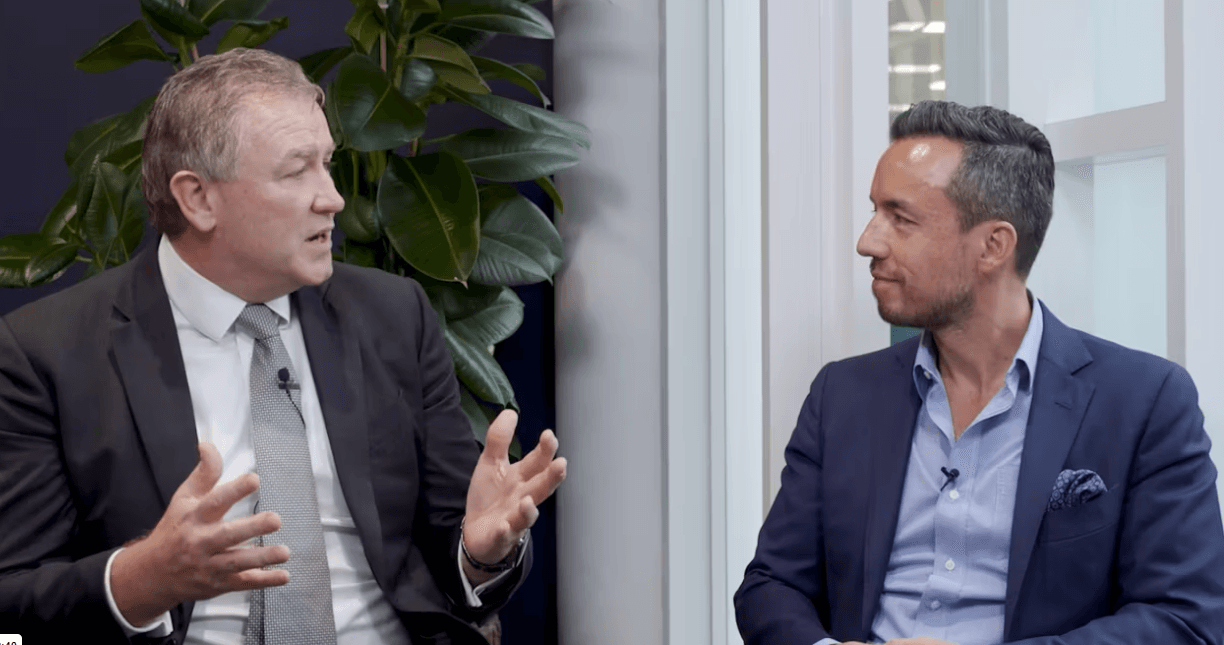After a grim 2022, when fixed income and equity markets managed to sell off simultaneously, the two asset classes have reverted to a more usual holding pattern. Over 2024, stockmarkets soared, while bonds have been lacklustre – as might be expected at a time of stronger economic growth. There are signs, however, that correlation might be increasing once more – so to what degree have multi-asset managers been looking beyond bonds and equities for diversification as they plan for the year ahead?
According to Johanna Kyrklund group chief investment officer at Schroders, bonds are not offering the same negative correlation benefits they did in the deflationary, zero-interest-rate regime of the last decade. “Generally, the environment is one of positive correlation between stocks and bonds,” she says.
“The biggest risk to stockmarkets is if bond yields sell off. If yields rise and bond prices fall, that poses a valuation challenge to stockmarkets. This environment of more positive correlation than negative is the same as in the last decade, when the main risks were deflationary.”
For Karen Ward, chief market strategist for EMEA at J.P. Morgan Asset Management, fixed income provides a hedge against certain risks – but not others. Investors need protection from recession risk, she explains, which bonds can provide – but also from inflation shocks and fiscal largesse, which could cause both bond and stock prices to fall. “Bonds are no longer the one-size-fits-all solution they once were,” she adds. “Investors today need different life-rafts for different storms.”
In a scenario where the US economy cools, Ward says, it is possible geopolitical tensions cause a loss of confidence and lead to recession. In this scenario, she would expect bonds once again to offer diversification benefits against equity losses.
“Investors today need different life-rafts for different storms.

Karen Ward, JP Morgan Asset Management
“Bonds have already demonstrated their worth when recessionary fears arise”
Bonds have already demonstrated their worth when recessionary fears arise”
“Bonds have already demonstrated their worth when recessionary fears arise,” she continues. “During the equity market sell-off over the summer of 2024, bonds exhibited their more typical offsetting characteristics. US equities fell by 8.4% from 16 July to 5 August, while US 10-year treasuries delivered positive returns of 3.2%.” High yields give bonds a greater ability to protect against recession, adds Ward.
Inflation risks
Nevertheless, if the problem turns out to be inflation – a plausible scenario, given Donald Trump’s stated policy agenda of tax cuts, tariffs and deregulation – bonds will not be able provide the same protection. Analysis by Schroders indicates that, since 1962, equity-bond correlation has been positive 98% of the time whenever five-year annualised inflation has breached the 3% threshold.
“In this case, fixed income assets might be expected to experience a sell-off at the same time as stock prices are falling,” Ward explains. “This expectation underscores the importance of broadening diversification strategies beyond traditional bonds.”
Where else are asset allocators looking then? One option, Kyrklund says, is gold because it can provide a hedge against recession and is also a good store of value in the event of a more stagflationary environment and unexpected geopolitical developments. “It has protected investors in the case of inflationary shocks as well, but generally only when inflation has been very high,” she adds.
For her part, Ward is less enthusiastic. “Gold may also rise in value during inflationary episodes, as investors seek to store value in an asset that is limited in supply,” she observes. “In ‘normal times’, however, gold is a zero-yielding asset – so we would argue that other real assets provide a better source of protection through the cycle.”
Real assets
Indeed, both Ward and Kyrkland emphasise the part real assets can now play in portfolios. “Examples include real estate and infrastructure assets that offer resilient long-term cashflows, as well as assets like insurance-linked securities, where weather is the key risk factor,” Kyrkland says.
According to Ward, meanwhile, real estate, infrastructure, transport and commodities can provide a hedge against inflation, offering protection when conventional safe havens are scarce. “Their intrinsic value and tangible nature make them less susceptible to the erosive effects of rising prices, thereby maintaining purchasing power and protecting real returns during inflationary periods,” she says.
Michael Strobaek, chief investment officer at Lombard Odier, goes on to highlight how these assets could also enjoy a cyclical tailwind, on top of offering diversification benefits. “We expect the US elections and potentially German elections to act as catalysts in developed markets to convert some of the reported infrastructure investment needs into infrastructure spending,” he says.
“In emerging markets, investment remains strong, with the extension of the ‘BRICs’ grouping to additional countries and its cooperation framework focusing attention on infrastructure operators, which will benefit from rising infrastructure spending.”
Michael Strobaek also sees value in real estate, which has been steadily recovering after a long period of weakness. “With falling central bank rates and a solid growth outlook, real estate investments offer alternative sources of income in markets with comparatively low bond yields,” he explains. “This could be particularly evident in the Eurozone, where bond yields are lower.”
Private markets
Private equity is another potential diversification tool, with many of the factors that have driven investors towards the asset class in recent years still in place. The most innovative companies tend to be staying private for longer, for example, which is helping to broaden the opportunity set for investors. At the same time, asset management groups are striving to broaden access to private markets through vehicles such as the Long-Term Asset Fund in the UK, the European Long-Term Investment Fund and even through ETFs. The UK government has meanwhile just announced the world’s first private stockmarket.
That said, the sector has seen some difficulties, with high interest rates denting sentiment and examples of over-leverage evident in parts of the market. Morningstar has warned that, should access ‘democratise’ too far, the opportunity, and diversification benefit could evaporate, adding: “The outsized returns we have seen in some private assets may well be a mirage that evaporates before less sophisticated investors even arrive.
“As private assets become more accessible, the market for them is likely to become more efficient, with fewer mispriced assets and fewer profit opportunities.” In short, the opportunity may be there today but it is unlikely to remain so indefinitely.
As interest rates have dropped, bond and equity correlations have normalised, but they may not stay that way indefinitely. Equally, relying simply on bonds and equities may not adequately protection against an inflationary environment. Multi-asset investors are increasingly viewing real assets such as real estate and infrastructure as important extra strings to their bow to help build more robust diversification into portfolios.










